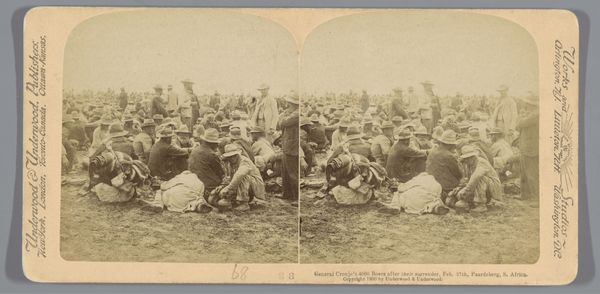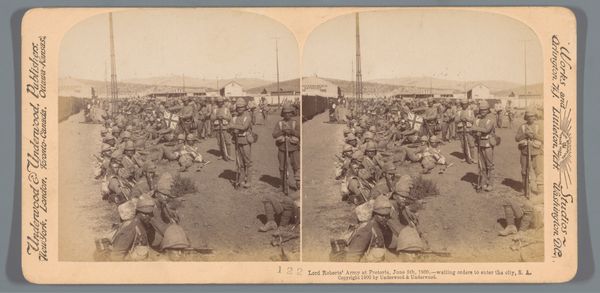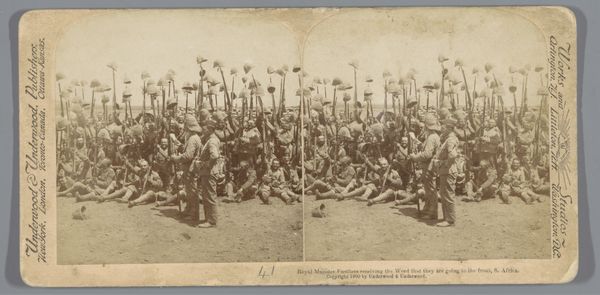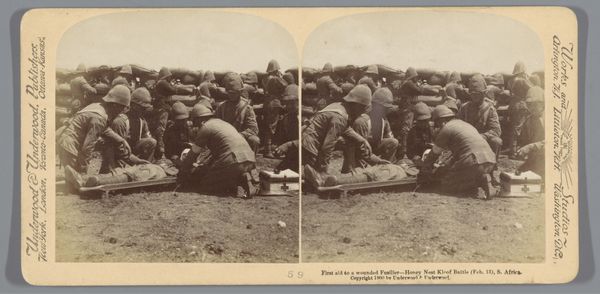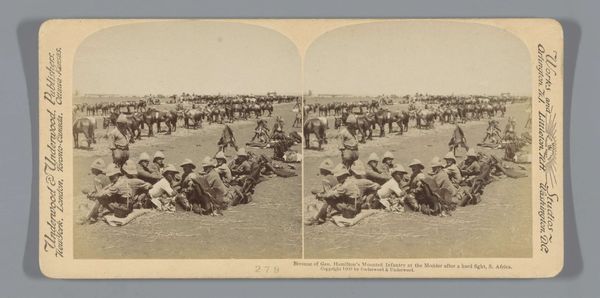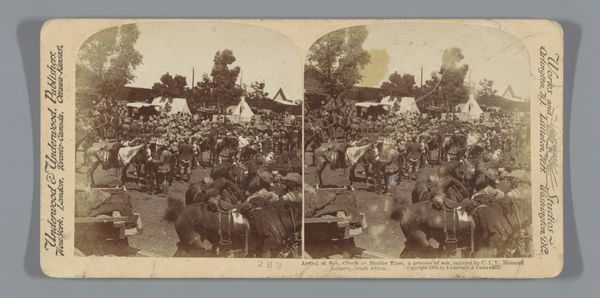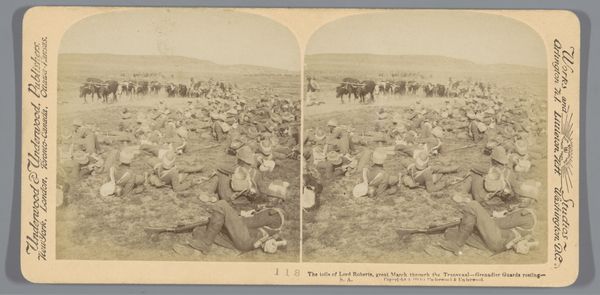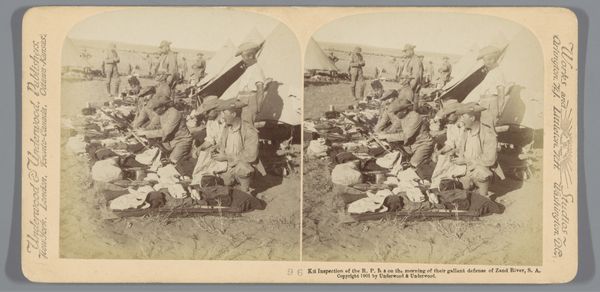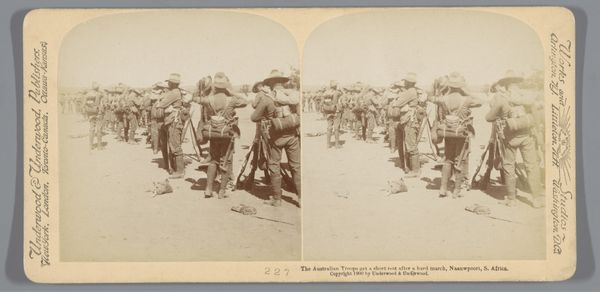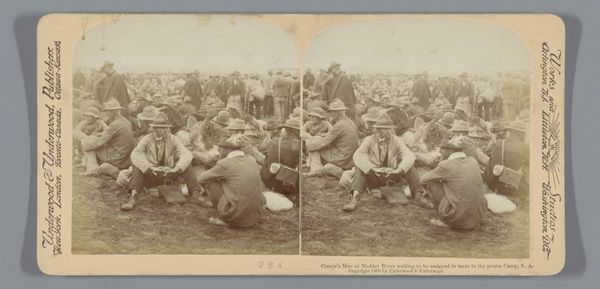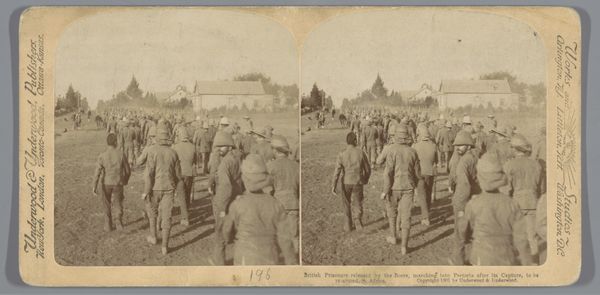
Boerenkrijgsgevangenen rusten uit op de weg tussen Paardeberg en de Modderrivier, Zuid-Afrika 1900
0:00
0:00
Dimensions: height 88 mm, width 178 mm
Copyright: Rijks Museum: Open Domain
Curator: Wow, that's a sea of weary faces. It gives you a deep, sinking feeling just looking at it. Editor: Indeed. What we're seeing is a gelatin silver print titled, "Boerenkrijgsgevangenen rusten uit op de weg tussen Paardeberg en de Modderrivier, Zuid-Afrika," dating back to 1900. It’s attributed to an anonymous artist and offers a chilling glimpse into the Second Boer War. Curator: The vast, flat landscape seems to stretch on forever, just like their exhaustion, probably. The monochromatic palette enhances that feeling—like everything’s been drained of its color, drained of hope. You can almost smell the dust and despair. Editor: And that's precisely the point. The photo aestheticizes, and at the same time reveals, the dehumanization inherent in colonial warfare. Look closely—you'll notice how the arrangement of the figures, the way they are packed together, is telling a visual story about power, subjugation, and the loss of autonomy during the war. Curator: It does make you think about all those personal stories erased in the broad strokes of history. Each of those individuals, a whole life reduced to a captured figure in a vast, indifferent landscape. And yet, there’s a strange sort of communal strength too, a shared suffering. Editor: It certainly captures a crucial historical juncture, spotlighting the brutal realities of the war. But even as a piece of history, consider its inherent biases. Who do you imagine was behind the camera? Whose story was centered here, and how might that framing influence our reading of it today? Curator: The camera capturing a captured moment! It's so odd! I guess to look is always a kind of act that positions us within this historical mess! Even today... Does bearing witness create some ethical responsibility? Is not seeing a kind of forgetting? Editor: Precisely. Consider how documentary photography during times of conflict becomes a powerful, yet complex space where ethics and politics become irreversibly intertwined. That consideration, for me, enriches and troubles our understanding. Curator: So much for a simple picture, then. I’ll never be able to just look at something again. Thanks, I guess! Editor: That is, in effect, the power and peril of art... to not let us rest easy with what we think we know.
Comments
No comments
Be the first to comment and join the conversation on the ultimate creative platform.
